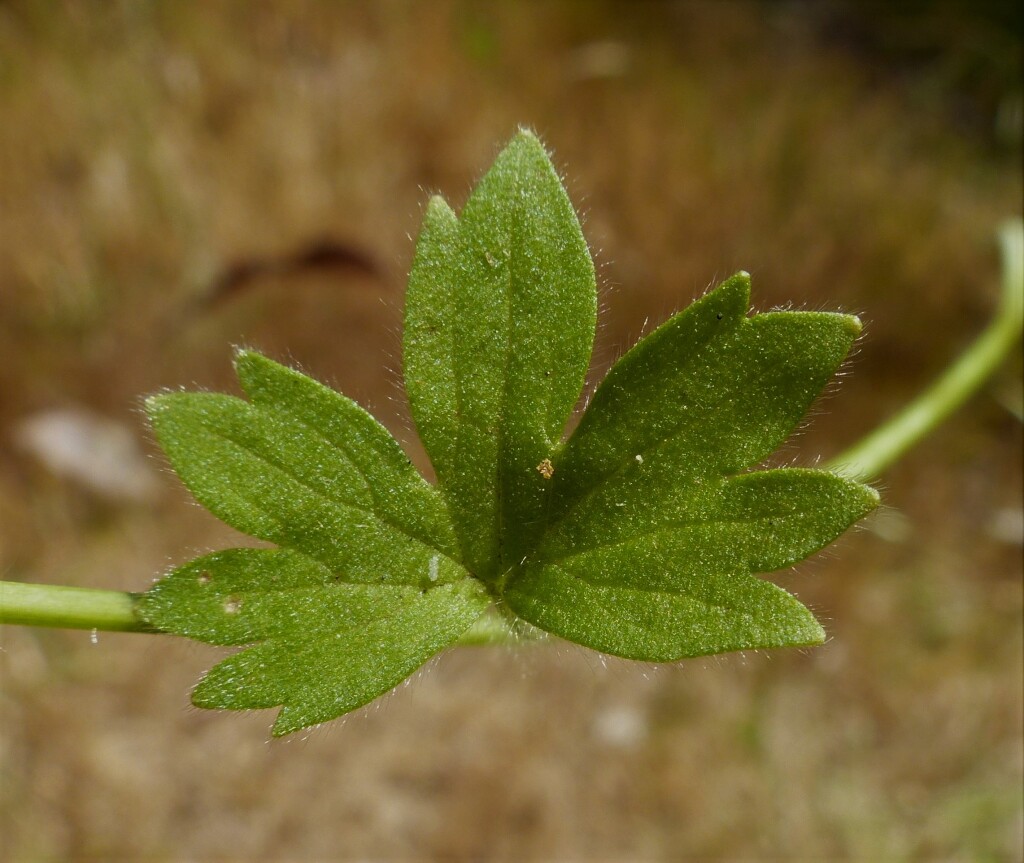Ranunculus parviflorus
L. Small-flower ButtercupSoftly hairy annual, stems spreading to erect, 15–30 cm long. Basal leaves more or less rosetted, orbicular to reniform, 3-lobed or subentire, margins variably toothed, 1–3 cm diam.; petioles mostly 2–5 cm long. Flowers 5–7 mm diam., shortly pedicellate in axils or in short terminal cymes, pedicels elongating (to c. 3 cm) in fruit; sepals 5, ovate, c. 2 mm long, pilose on back, reflexed; petals 2–5, ovate to obovate, slightly exceeding sepals, yellow; nectary attached c. one-third from base of petal, lobe c. 0.4 mm long, ovate, free above midway; stamens 5–8. Achenes usually 6–15, c. orbicular, 2.5–3 mm long overall, lenticular, the faces more or less evenly covered with small tubercles each having a short hooked bristle at its apex; beak triangular or hooked at apex, c. 0.5 mm long; receptacle glabrous. Flowers Nov.–Dec.
VVP, VRiv, GipP, OtP, Gold, CVU, DunT, NIS, EGU, HSF, HNF, OtR, Strz. Also SA, NSW, Tas. Native to the Mediterranean region. Uncommon in Victoria and recorded only from Kennett River, Enfield, Glenlyon, Cottles bridge, Beechworth, Walhalla, Foster and Buchan areas (all post-1950).
Walsh, N.G. (1996). Ranunculaceae. In: Walsh, N.G.; Entwisle, T.J., Flora of Victoria Vol. 3, Dicotyledons Winteraceae to Myrtaceae, pp. 35–63. Inkata Press, Melbourne.
 Spinning
Spinning



